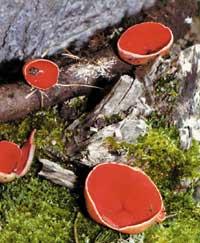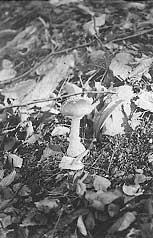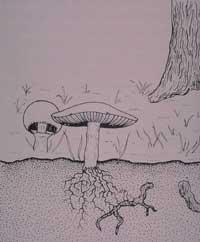Mushrooms, sweet or dangerous forest fruits
2000/09/17 Kortabarria Olabarria, Beñardo - Elhuyar Zientzia
Mushrooms are only the fruits of the fungi that grow in the subsoil. In spring and autumn they are the ones that generate the most. And that is no coincidence. The germination of the spores of the fungi requires a relatively high humidity, higher than 70%, and a temperate temperature. If there is no drought, spring and autumn here perfectly meet both conditions.
Therefore, in the coming days, in case of having some luck and patience, mushrooms will be available in the forests of Euskal Herria. But be careful! You can not take any mushroom. In fact, there are several poisonous mushrooms, some of them even deadly. In Euskal Herria, being a fairly large knowledge of mycology, there is no excess poisoning due to mushrooms. That has not always been so. In the years after the war - in the years of famine - many people poisoned and died in Euskal Herria. Today, fortunately, because there is no such need, people do not eat mushrooms that can be dubious, so there are few poisoned. And when they occur, they do not have as much influence as in a time. According to the experts, of which some years ago they ate mortal mushrooms, 80% died, while today, thanks to the advance of science, the risk of death if the poisonings were taken in time would be 5 to 10%.
The only way to know if mushrooms are good or bad is by their morphological characteristics:
- With macroscopic characteristics (shape, color, leg, leaves, if it has or does not ring…).
- For its organoleptic characteristics (smell, flavor…).
- Using macrochemical characteristics (changes in miga and skin due to chemical reagents).
- Microscopic characteristics (spores, plot…).
Of course, if mushrooms are collected to eat, just look at the macroscopic and organoleptic characteristics. The help of books on mushrooms is also appreciated. For the study or classification of mushrooms, it is necessary to take into account their macrochemical and microscopic characteristics.
In case of poisoning, you must first contact health services. Before the arrival of the doctor or until his transfer to the emergency services, to expel those who eat, saltwater can be given to the poison. Health services will be provided:
- Date of collection and time of consumption.
- Data of the species meals (name, color, smell, place of collection, etc. ).
- Time elapsed from food to the appearance of the first symptoms.
- Preparation of mushrooms.
- The number of people who have eaten the same mushrooms and the number of poisonings.
- The specimens that have not been prepared, those that have been thrown into the trash, those that have been left without food, invitations…
In any case, the only advice to avoid the risk of poisoning for people wanting to practice mushrooms can be: do not take mushrooms with doubts. These mushrooms are edible and can be found in autumn:
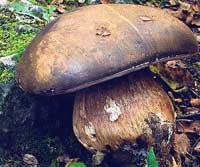
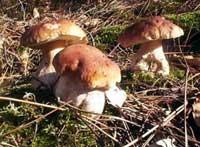
Newsletter aereus (black mushroom)
One of the most appreciated for mushrooms, since it looks very little. Its flavor is nice and aromatic, as the smell. It is found in hayeds, oak and oak.
Boletín us pinicola (black mushroom)
The above and this are often confused. Very edible and appreciated. When fresh it has pleasant flavors and smells, while when dry it is too intense and somewhat aromatic. As its name indicates, it is found in the pine forests, but also in the hayeds.
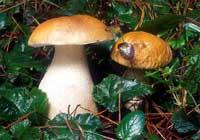
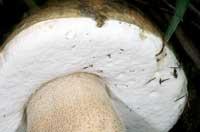
Newsletter edulis (white mushroom)
Having a very sweet white meat, it is very good edible. It is located mainly in wooded areas and pine forests.
Newsletter aestivalis (white mushroom)
It is a mushroom of very sweet flavor. Smaller than Boletín us edulis, but not as appreciated as he, since the worm touches immediately. It disappears in mid-October.
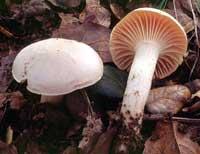
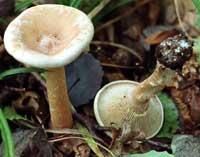
Camarophylls pratensis (meadow)
It is very interesting for mushroom collectors, on the one hand because you can find a lot in the wet meadows and on the other because it leaves late from the last days of October to the end of the year.
Geotrope de Clitocybe (goldsmith, San Martin)
They appear aligned at the end of autumn, sometimes in leafy forests and others in pastures. Edible and good, but uncommon.
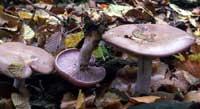
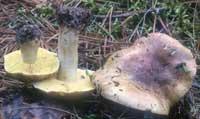
Lepista nuda
Ziza is a normal Hankaurdina, both in autumn and winter. Sometimes it leaves in spring in the pine forests of Euskal Herria, in the meadows next to the forests or in the leafy forests. Very appreciated by mushrooms.
Equestrian tricholoma
It appears at the end of October and lasts until the first wall arrives. This yellow mushroom is not easily found in Euskal Herria. They appear under conifers in siliceous lands. In the North Basque Country in 1958 there were 12 poisonings when this mushroom was presumed for eating the Amanita phalloides. So be careful.
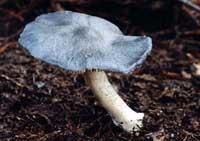
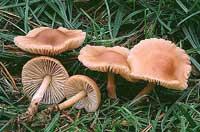
Tricholoma terreum
This mushroom that appears at the end of autumn is small and edible. It is located in coniferous forests and is common in the pine forests of Euskal Herria in November and December.
Marasmius oreade (edible marasmio)
This mushroom is very appreciated and known. Because it is easy to dry for the preserves, mushrooms appreciate it a lot, since in winter they can use it to make soups and sauces. It stands out among herbs, on the edges of pastures, gardens and roads. Darkens the grass of the area.
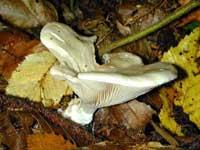
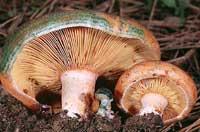
Clitopilus prunulus (miller)
Common mushroom in summer and autumn. Among herbs stands out under different hardwood, often along with the classic edible bulletins. That is why many mushrooms have called "txibato" because the fungi are close. Edible and excellent.
Lactarius deliciosus
It leaves in autumn and early winter under the pines of calcareous lands. In Euskal Herria it was not eaten, but the Catalans who came to the textile factories of the beginning of the century showed a contrary trend.
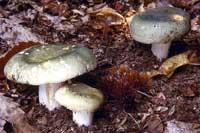
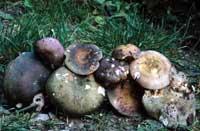
Russula virescens (gibelurdin)
It leaves until November in the mosses and herbs of the leafy forests, especially in the oak forests and occasionally under the conifers.
Russula Cyanoxantha (urretxa, gibelurdin)
It is a very common mushroom. It leaves in summer and autumn, both in leafy and in coniferous forests. This mushroom and the previous one are easily mixed with Amanita phalloides.
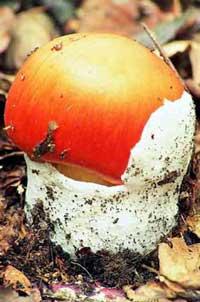
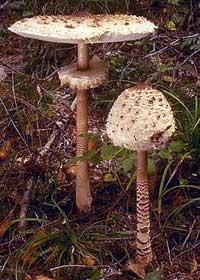
Amanita caesare (culeto, yema)
It appears in chestnuts, oak and hayeds at the end of summer and throughout the fall. He has a great fame, they say he is a "king" in mushrooms, perhaps because it is very difficult to find them. It can be confused with the muscaria amanita and the venomous false culeto.
Macrolepiota procera (galanperna)
Before, except in Álava, the galanperna was not eaten in the Basque Country, but when the mycological contests began, they began to meet and get to know each other in many places. Easy to find.
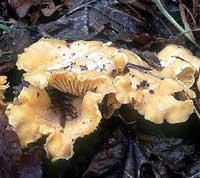
Cantharellus cibarius
Zizahoria leaves on the ground from early spring to autumn, especially in siliceous lands, both under leafy and under conifers. It is edible and excellent, abundant according to the times and very appreciated to make sauces or stews.
Published in 7

Gai honi buruzko eduki gehiago
Elhuyarrek garatutako teknologia



